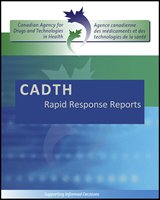| Celis-Rodriguez et al. 201313 |
Patients requiring conscious or cooperative sedation: The use of dexmedetomidine, fentanyl, remifentanill, propofol, or midazolam in doses titrated according to response is recommended for conscious sedation in minor therapeutic, diagnostic or surgical situations in ICU. (Moderate quality of evidence, strong recommendation)
Patients with delirium and withdrawal syndrome: Antipsychotics and/or dexmedetomidine are recommended for the drug treatment of delirium. (Moderate quality of evidence, strong recommendation) Dexmedetomidine is recommended as an ulternative in the management of delirium. (Moderate quality of evidence, strong recommendation)
Withdrawal syndrome in the intensive care unit: Withdrawal syndrome due to alcohol: Patients without tracheal intubation or ventilatory support it is advisable to use drugs with a low risk of producing respiratory depression and severe hemodynamic adverse effects, such as haloperidol and dexmedetomidine. (Low quality of evidence, strong recommendation)
Patients with mechanical ventilation: Whenever possible, it is advisable to use conscious or cooperative sedation with titrated doses of a continuous infusion of propofol or dexmedetomidine. (Moderate quality of evidence, strong recommendation). The use of a sedative with a shorter half-life, such as dexmedetomidine, is recommended for reducing the duration of MV and the incidence of delirium in patients that can tolerate mild sedation levels (RASS 1 to −3 or Ramsay 2---3). (Moderate quality of evidence, strong recommendation). Dexmedetomidine is recommended as a useful drug for postoperative sedation and analgesia in patients requiring MV for short periods of time, and particularly in septic patients. (Moderate quality of evidence, strong recommendation).
Patients undergoing withdrawal of the endotracheal tube and mechanical ventilation: Dexmedetomidine is recommended in postsurgical patients. (Low quality of evidence, strong recommendation). Dexmedetomidine is recommended in patients with mechanical ventilation weaning difficulties and in patients with withdrawal syndrome. (Low quality of evidence, strong recommendation). Dexmedetomidine is recommended in patients with failed previous attempts of weaning from MV secondary to agitation and delirium. (Low quality of evidence, strong recommendation).
Special procedures (burn victims): Sedoanalgesia in the immediate postoperative period of cardiovascular surgery: The use of dexmedetomidine, remifentanil or their combination, the combination of low-dose propofol and midazolam, or the combination of propofol and fentanyl are recommended for postoperative sedation and analgesia. (Moderate quality of evidence, strong recommendation). Dexmedetomidine is recommended among patients in the postoperative period of cardiovascular surgery, either as single drug or combined with opioid analgesics. (Moderate quality of evidence, strong recommendation).
Neurological and neurocritical patients: It is advisable to use drugs with a short half-life and scant accumulation (propofol, dexmedetomidine and remifentanil), allowing frequent neurological evaluations. (Moderate quality of evidence, strong recommendation).
Patients with renal failure: Patients with liver failure: Dexmedetomidine is suggested as coadjuvant treatment in cirrhotic patients with alcohol withdrawal syndrome, when conventional management fails. The dose should be lowered. (Moderate quality of evidence, weak recommendation).
|

